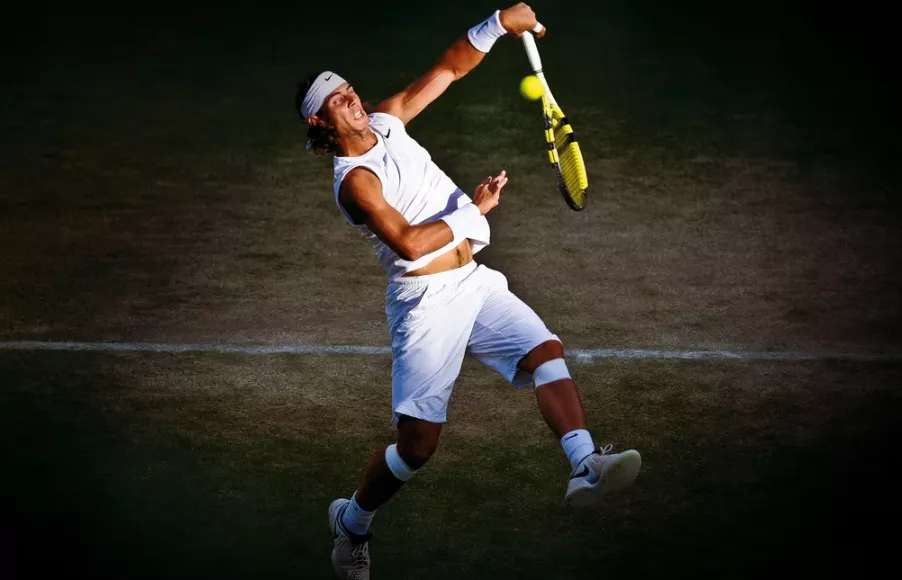Rafael Nadal, one of the greatest tennis players in history, has left an indelible mark on the sport, redefining its boundaries alongside his formidable rivals. However, recent challenges have raised questions about his future in the game.
In the lead-up to the 2024 French Open, Nadal faced one of the most challenging periods of his career. After a series of injuries culminating in significant hip surgery the previous year, the initial months of 2024 were marked by uncertainty as he aimed to return to competitive play. His comeback at the Barcelona Open was met with disappointment, as he struggled physically, ultimately losing in the second round. Despite these setbacks, he expressed his desire to bid farewell to his home crowd, acknowledging the emotional significance of the moment.
However, hope flickered back into view as the French Open approached. After months away from the court, Nadal began to feel he could perform at a high level once again. He embraced the joy of being a professional athlete, relishing the daily training routines and family travels. When asked about the possibility of this being his final appearance at Roland Garros, Nadal responded lightheartedly, saying, “Let’s explore,” while emphasizing his enjoyment of the moment.
Sadly, this optimism was short-lived. In the first round of the tournament, Nadal faced a challenging opponent in Alexander Zverev, resulting in a hard-fought three-set loss. Despite his efforts to prepare for the French Open and the upcoming Olympics, a thigh injury soon sidelined him, leading to a heavy defeat against Novak Djokovic in the second round.
At 38 years old, it became increasingly clear that Nadal’s body, worn down by years of intense competition, was unable to sustain the physical demands of professional tennis. His recent injuries have not only affected his career but have also impacted his personal life, limiting his ability to engage in activities he loves, such as playing with his son and enjoying recreational golf. As he contemplates the future, it is time for him to embrace the life his remarkable career has afforded him.
While Nadal’s exit from the sport may not follow the fairytale narrative he deserves, it mirrors the authenticity of his journey. For much of his final years, Nadal competed in pain, often constrained by injuries and unable to deliver one last spectacular performance. Yet, akin to Andy Murray’s career conclusion, Nadal’s story remains grounded in the realities of perseverance and resilience.
Throughout his career, Nadal’s motivation and passion for tennis have remained unwavering. Known for his relentless pursuit of excellence, he exemplifies a fierce commitment to every point on the court. This dedication serves as an enduring lesson for future generations, demonstrating that true greatness is achieved through hard work and tenacity.
Emerging on the professional scene in the early 2000s, Nadal’s rise coincided with a decline in American dominance in men’s tennis. While some feared that the sport was losing its luster, Nadal, alongside Roger Federer and Novak Djokovic, elevated tennis to unprecedented heights through their intense rivalries.
Nadal has undoubtedly transformed the game. His powerful topspin forehand revolutionized how the sport is played, influencing countless players who strive to replicate his unique style. Even as advances in string technology have allowed others to achieve similar spin rates, Nadal’s forehand remains unmatched.
Beyond his competitive spirit, Nadal is a complex figure. While he is often celebrated for his fiery determination, he possesses an extraordinary level of self-control on the court. Although he may express frustration during practice, his mindset shifts to one of composure and focus during matches. Regardless of the challenges he faced, Nadal remained calm and committed, continuously searching for solutions to secure victory.
From his debut at Roland Garros in 2005, where he claimed his first title, Nadal’s journey has been defined by his relentless pursuit of improvement. After enduring consecutive Wimbledon final losses to Federer, he reworked his game, ultimately triumphing in a legendary 2008 final at the All England Club. Despite the toll of age on his speed, Nadal’s tactical acumen at the net has played a pivotal role in his late-career success.
Initially viewed as a player whose physical style could lead to an early burnout, Nadal has defied expectations. His two-decade career is a testament to his greatness on clay and in tennis as a whole, solidifying his status as one of the sport’s all-time best. As Nadal approaches the next chapter of his life, his legacy will undoubtedly inspire future generations of athletes.
Related topics:
- City Stuns Barcelona in Women’s Champions League Opener
- Mackenzie Arnold: Reflecting on Triumphs and Future Goals
- Matildas Coach Tom Sermanni Invites Sam Kerr to Camp Ahead of Friendlies

